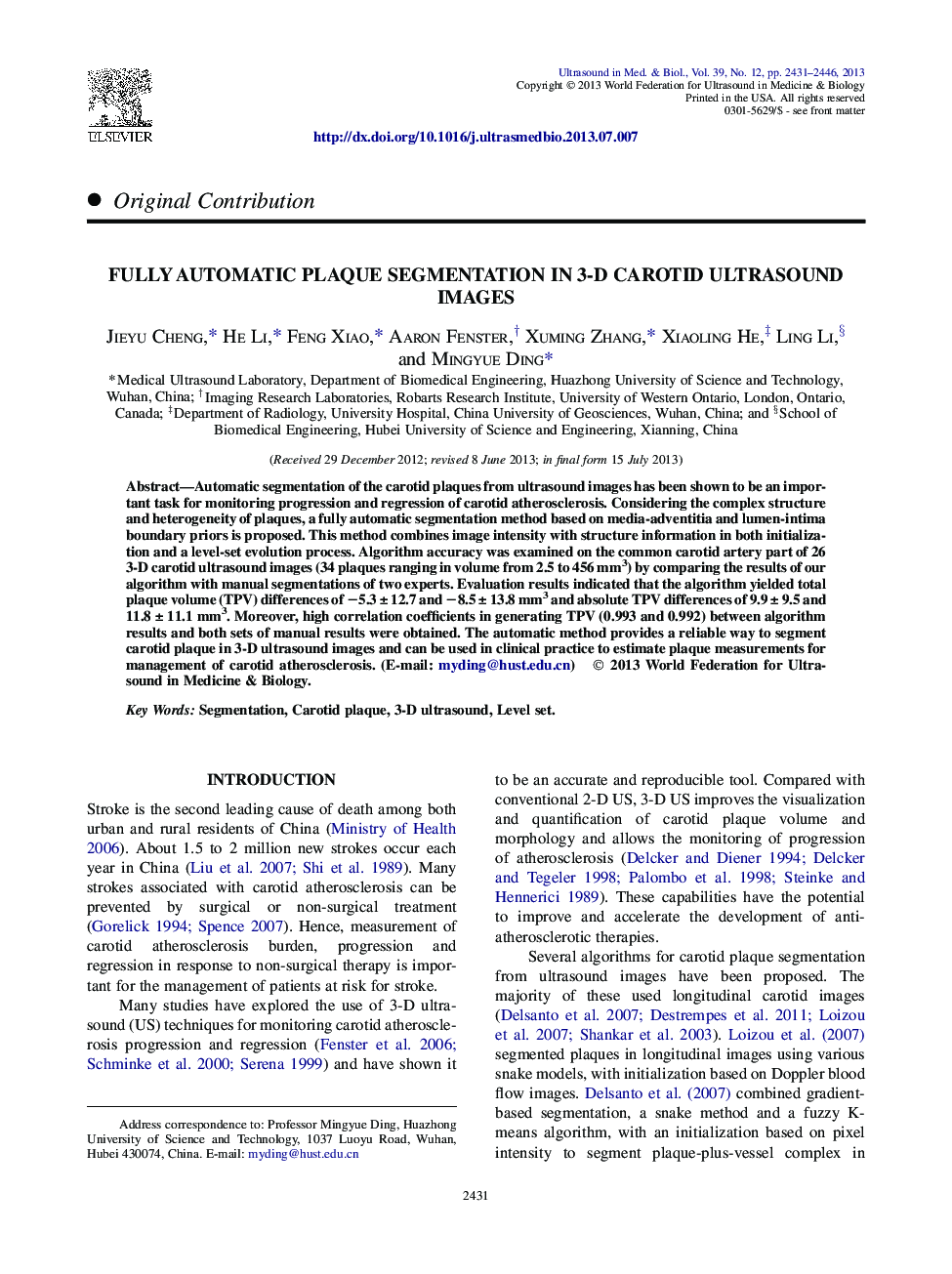| Article ID | Journal | Published Year | Pages | File Type |
|---|---|---|---|---|
| 1760524 | Ultrasound in Medicine & Biology | 2013 | 16 Pages |
Abstract
Automatic segmentation of the carotid plaques from ultrasound images has been shown to be an important task for monitoring progression and regression of carotid atherosclerosis. Considering the complex structure and heterogeneity of plaques, a fully automatic segmentation method based on media-adventitia and lumen-intima boundary priors is proposed. This method combines image intensity with structure information in both initialization and a level-set evolution process. Algorithm accuracy was examined on the common carotid artery part of 26 3-D carotid ultrasound images (34 plaques ranging in volume from 2.5 to 456 mm3) by comparing the results of our algorithm with manual segmentations of two experts. Evaluation results indicated that the algorithm yielded total plaque volume (TPV) differences of â5.3 ± 12.7 and â8.5 ± 13.8 mm3 and absolute TPV differences of 9.9 ± 9.5 and 11.8 ± 11.1 mm3. Moreover, high correlation coefficients in generating TPV (0.993 and 0.992) between algorithm results and both sets of manual results were obtained. The automatic method provides a reliable way to segment carotid plaque in 3-D ultrasound images and can be used in clinical practice to estimate plaque measurements for management of carotid atherosclerosis.
Related Topics
Physical Sciences and Engineering
Physics and Astronomy
Acoustics and Ultrasonics
Authors
Jieyu Cheng, He Li, Feng Xiao, Aaron Fenster, Xuming Zhang, Xiaoling He, Ling Li, Mingyue Ding,
